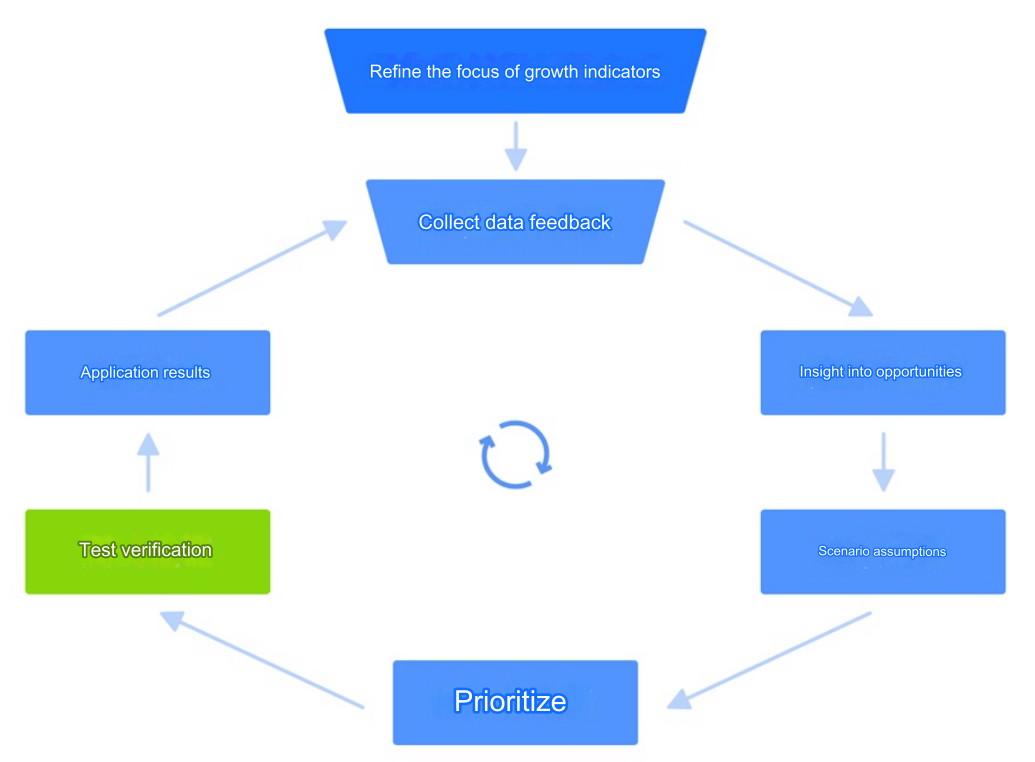The most challenging aspect of being a product manager is the ability to drive team decisions. The key isn’t whether your plan is perfect, but whether you can align the team around a shared consensus. In this article, the author shares several crucial strategies for achieving effective team decision-making, helping you streamline project execution and ensuring that everyone is working toward the same goal rather than pulling in different directions.
One of the most challenging aspects of being a product manager is not simply figuring out what to do, but rather how to align the team to move in the same direction. As a product manager, all eyes are on you, yet every team member has different concerns and focuses—technical teams worry about implementation difficulty, marketing teams want the product to launch quickly to boost sales, designers are focused on enhancing user experience, and upper management is primarily concerned with ROI. Getting everyone to stay on the same page and move in one direction can be incredibly difficult.
The ability to drive team decisions is an invisible yet fundamental skill for product managers. Often, project delays and decision conflicts are not caused by poor product strategies but by the lack of team consensus on issues and goals. In this article, I’ll discuss the key factors in team decision-making and offer guidance on how to drive project execution more smoothly, so that everyone’s ideas converge instead of diverging.

1. Clear Problem Definition
Why is defining the problem the first step to successful decision-making?
Let’s start with a situation you’ve likely encountered: a problem arises in the team, and everyone starts discussing it. However, you quickly realize that each person seems to be talking about a completely different “problem.” You mention a drop in product conversion rates, the tech team thinks it's due to slow page loading, while the operations team suggests the promotional activities aren’t attractive enough. Everyone has their own perspective, and as a result, no one can clearly define what the actual problem is.
In such a scenario, pushing for a decision is nearly impossible. As the product manager, your first step is to help the team clearly define the problem and ensure that everyone has the same understanding of what the problem actually is. This forms the foundation for all subsequent discussions and decisions.
How to Define the Problem Clearly?
5 Whys Analysis Method
Sometimes, the team starts discussing surface-level symptoms, such as “Why is the user payment experience poor?” At this point, many assumptions and solutions may be suggested, but if you jump straight into solving the problem, you may discover that the root cause hasn’t been identified, making optimizations ineffective.The “5 Whys” technique is an excellent tool to help dig into the core of the problem by continuously asking "Why." For instance, if users feel the payment process is too complex, the first “Why” may reveal that the payment process has too many steps, but by asking further, you might find the real issue lies in the long response time of a particular payment interface, not user confusion. Only by tracing the root cause can you find the right solution.
Combine Data with User Feedback
Of course, asking "Why" isn’t enough. Data and user feedback are like magnifying glasses for product managers, helping to more accurately define problems. For example, if the team believes users are dropping off at a certain step, what exactly is causing it? Is the page loading too slowly, or are there too many payment steps? Data analysis and user feedback often reveal unexpected details.
Case Study: Problem Definition in Payment Process Optimization
I once worked on a payment process optimization project where the initial feedback was, “Users find the payment experience poor.” The team initially assumed the issue was a complicated payment selection interface and planned to redesign the page. However, after analyzing the data, we discovered that most users dropped off after clicking the "Confirm Payment" button, not during payment method selection. The real problem was the slow system response, not the interface complexity.
Ultimately, we shifted our focus to improving system performance rather than making unnecessary interface changes. After the optimization, the payment completion rate increased significantly. This shows how accurate problem definition can have a huge impact—if we hadn’t dug deeper, we might have gone in the wrong direction and wasted time on irrelevant changes.
2. Data-Driven Decisions vs. Intuition
The Power of Data-Driven Decisions
“Data-driven” is a term we hear constantly, especially for product managers, where data becomes your “decision-making coin.” In decision-making, data is often your most powerful support—it helps reduce unnecessary debates by providing clear facts: what users are doing, what they like, and what they don’t like.
For instance, if you're optimizing a recommendation algorithm, you might use A/B testing to compare different solutions. The data will tell you which version has a higher user click rate and conversion. Decisions backed by data are easy to accept and help build quick team consensus.
Tip: Data doesn’t have to be overly complicated. You just need to focus on core metrics that truly answer the question. Whether it's user click behavior, conversion rates, or key pain points from user feedback, a few clear data points can often speak louder than a lengthy discussion.
When Should You Rely on Intuition?
However, data isn’t always the answer. Often, data may be delayed or not provide clear guidance, especially when making innovative decisions. At these times, a product manager’s experience, insight, and intuition become crucial.
Take Instagram as an example. The team once faced a choice: they had originally designed a social app with many complex features, but they decided to cut most of them and focus solely on "photo sharing." This simplification wasn’t supported by extensive data, but the team’s intuition about user experience guided their decision—and it turned out to be the right one.
Case Study: Intuition in a SaaS Platform’s Decision
A SaaS platform faced a dilemma when developing a new product: should they launch a feature-complete version or a lightweight version focused on core functions? The tech team wanted to show off their skills with a full release, but the product team, based on market insights, believed a lightweight version could gather faster user feedback for optimization.
The product manager trusted their intuition and went with the lightweight release. Despite insufficient data to fully support the decision, market feedback was overwhelmingly positive, helping the team quickly gather a loyal user base for future iterations. Had they waited to release the full version, they might have missed the optimal market window.
3. The Importance of Prioritization in Decision-Making
As a product manager, you might often feel like you’re constantly putting out fires: there’s a queue of product demands, the tech team says they’re short on resources, and marketing and operations are pushing for fast releases. The most frustrating part is that everyone believes their request is the “most important.” If you don’t have a clear prioritization strategy, things will only get messier, and progress will stall.
Prioritization is crucial because it helps you navigate through conflicting demands, ensuring that the team’s resources are focused on the most valuable tasks. It’s not just about choosing what to do, but also about deciding what not to do right now.
How to Set Priorities?
RICE Model
A particularly useful tool for prioritization is the RICE model. It stands for Reach (impact scope), Impact, Confidence, and Effort. You can assign scores based on these four factors to each request and arrive at a priority ranking. For instance, a feature might benefit a large user base (high reach), but if it takes too long to develop (high effort), you’ll need to balance these factors to decide what to tackle first.
Tip: While early in your career you might prioritize by gut feeling, after a few years of product management, a structured approach like RICE becomes essential as your workload grows.
Case Study: Prioritization in a B2C E-Commerce Platform
When evaluating priorities for a B2C e-commerce platform, we encountered a situation where the operations team wanted a new “flash sale” feature for an upcoming promotion, while user feedback pointed to the need for improvements in the product review system. Both seemed important, but the team had limited resources.
Using the RICE model, we realized that enhancing the review system had a broader impact (affecting all users), while the flash sale feature was only relevant for a short time during the promotion. Additionally, we had more confidence in the value of improving the review system. We decided to prioritize the review system, which ultimately boosted user retention.
Avoid the "We Want It All" Trap
Especially when you're starting out, it's easy to fall into the trap of wanting to do everything. Every request seems important, and everyone claims theirs is urgent. However, if you spread your resources too thin, you risk doing many things poorly and compromising product quality.
A more mature approach is to make clear choices about what not to do. Time and resources are always limited, so focus on the tasks with the highest impact. Although this means you’ll have to let go of some demands, it ensures that the truly important ones are executed well.
By mastering problem definition, leveraging data and intuition, and prioritizing effectively, you can guide your team toward clear, unified decision-making and smoother project execution.
4. Team Consensus and Communication
Why is consensus the core of decision-making?
If prioritization helps you decide what to do, team consensus ensures how to do it. Often, the decision itself isn’t overly complicated—the challenge lies in ensuring that everyone on the team is aligned. Each role, whether it’s technology, design, or operations, has its own priorities. If everyone interprets and executes the decision based on their individual understanding, things can quickly fall apart.
As a product manager, pushing decisions forward is not just about making choices yourself; it’s about getting the entire team on the same page. Everyone needs to understand why a decision is made and what goal it aims to achieve. The clearer this consensus is, the stronger the team's execution will be.
How to build team consensus?
Communicate in advance and reach private agreements
One of the worst things that can happen before a decision-making meeting is for team members to bring differing opinions and interests to the table without prior discussion. This often turns meetings into a tug-of-war where no one can convince the other, and the meeting ends with unresolved issues. Many effective product managers opt for pre-meeting communication. For example, before a formal decision-making session, they privately talk to key stakeholders such as tech, design, and marketing, addressing their concerns and needs in advance.
When the team finally gathers for the official meeting, partial consensus has already been reached privately, allowing the meeting to focus on implementing the decision rather than debating it endlessly. This simple strategy can significantly improve decision-making efficiency.
Make decision criteria transparent
Another key to building consensus is ensuring that all team members are clear about the criteria behind a decision. If they only see the result without knowing the reasoning, they may resist during execution. As a product manager, you must ensure that everyone understands why you chose option A over option B. What is the rationale behind your decision? Is it based on data, user feedback, or business strategy?
When decision-making is transparent, the team feels a stronger sense of ownership, and execution becomes more resolute.
Case Study: How Facebook’s Early Team Reached Consensus
During the early development of Facebook’s mobile product, the team faced significant disagreements. The tech team believed the mobile app should carry over many of the features from the desktop version, while the design team insisted on simplifying and focusing on core features. To reach a consensus, the product manager had multiple rounds of private discussions with both teams, presenting data analysis and user behavior research. The results showed that simplifying the features would enhance user experience and accelerate development. Ultimately, the team decided to base the mobile version on the design team’s proposal, incorporating some essential features from the tech team. This decision led to a successful mobile launch and set a precedent for team collaboration.
Why is risk identification crucial for decision-making?
No matter how smoothly a project seems to be progressing, risks are always inevitable. If you don’t anticipate potential risks, no matter how perfect your decision is, the project can be disrupted or even halted by unforeseen issues. For junior product managers, this step is often easy to overlook. They might think that as long as everything is well-planned, execution will go smoothly. However, the reality is that unexpected changes always arise during project development.
As a product manager, you not only need to devise solutions but also foresee potential risks that could derail your plans. By identifying risks early and having contingency measures in place, you can handle unexpected situations more confidently rather than being caught off guard.
How to effectively identify and prevent risks?
Create a Plan B: Every product manager needs a backup plan
Sometimes, no matter how well you plan, unexpected problems still arise. Whether it’s an unforeseen technical issue or a shift in the market, original plans may suddenly become unfeasible. Without a backup plan, the team can be forced into a reactive state, wasting time and resources as decisions have to be revisited.
As a product manager, you should always have a Plan B for key decisions. For example, if you’re planning to launch a new feature by a specific date and development progress is delayed, is there a “downgraded” version you could release instead? If market reception isn’t as expected, is there an alternative marketing strategy? These backup plans don’t have to be perfect but should ensure that the project doesn’t come to a complete standstill when risks emerge.
Establish a risk “early warning” mechanism
One key trait of risks is their unpredictability. While you can’t foresee every problem, you can catch early signs by monitoring key indicators. For instance, is a particular stage of the project frequently delayed? Is user feedback suddenly changing? Is the market deviating from expectations?
By having this “early warning system” in place, you can act preemptively to make adjustments before the risk fully materializes, rather than scrambling to react after the fact.
Conclusion
Driving team decisions isn’t easy, but it’s one of the most crucial skills for a product manager’s growth. Understanding these key elements and applying them to your daily work will help you push projects forward more efficiently and systematically. Your team will also see a significant boost in execution thanks to your clear guidance.
Being a product manager isn’t easy; there are always new challenges. But mastering the ability to drive team decisions is like arming yourself with a “weapon.” No matter how complex the project or difficult the decision, you’ll know how to guide your team to make the best possible choice. With continuous practice and reflection, you’ll become increasingly influential within your team.







